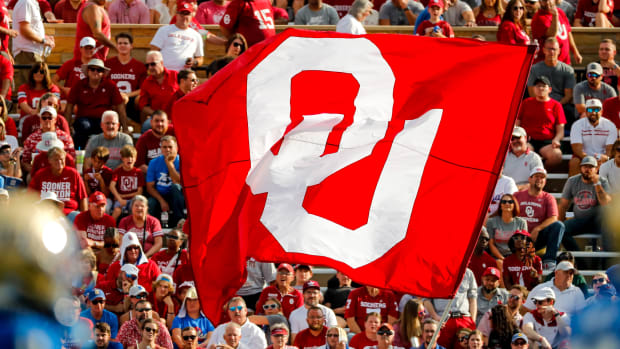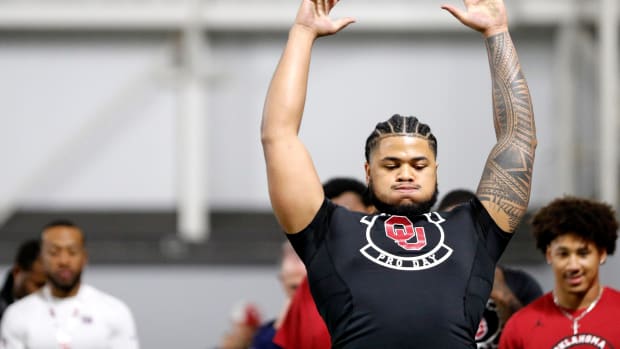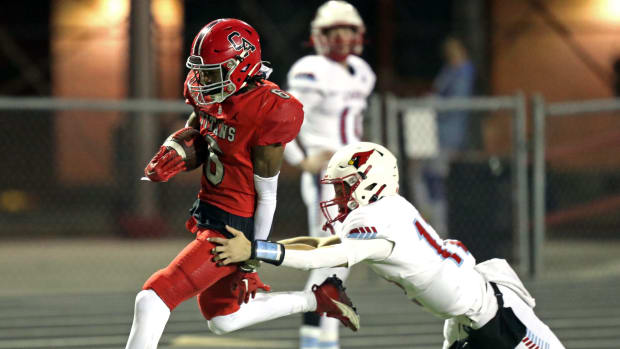Culture Shock: The New Big 12
COLUMN
The new Big 12 Conference has taken on a decidedly different look.
The league officially expanded on Friday — finally, a decade after it was raided by other leagues, and five years after it fruitlessly staged expansion tryouts — by adding BYU, Central Florida, Cincinnati and Houston.
The newcomers all bring something to the table: a national fan following, a huge student body, a flavor of the Upper Midwest and fertile recruiting grounds even deeper in the heart of Texas.
But BYU, UCF, UC and UH also add a new identity this conference hasn’t really had much of before: big-city population bases.
The Big 12 has gone metropolitan.
Houston is the fourth largest city in the U.S., with a population of nearly 2.4 million.
Cincinnati (65th at 307,000), Orlando (71st at 290,000) and Salt Lake City (125th at 201,000) all rank among the top population bases in the nation.
The Big 12’s previous big cities were Austin (10th at 1.01 million) and Fort Worth (12th at 942,000) as well as Oklahoma City (24th at 669,000, not counting Norman proper).
Lubbock (85th at 264,000) and Waco (200th at 142,000) also give the Big 12 population punch. But the league’s identity has always been in its small towns: Stillwater, Manhattan, Lawrence, Ames, Morgantown. Even Norman, Lubbock and Waco feel like cozy little college burgs.
Measured by the size of their television markets, it’s even more pronounced: Houston ranks eighth, Orlando is 17th, Salt Lake City 30th and Cincinnati 36th.
Combined with Dallas-Fort Worth (fifth), San Antonio (31st), Kansas City (34th) Austin (38th) and Oklahoma City (44th), the Big 12 now has nine of the top 44 TV markets in the country (10 if Morgantown, WV, is considered within the Pittsburgh market).
While it might sound at first like expanding into big-city TV markets is a good idea, there are hurdles.
The Big 12 has added schools — and will be competing for fan attendance and corporate dollars — in cities with three NBA teams, two NFL teams, two MLB teams and so much more.
Ask college football powers in California how steady their attendance and corporate sales are.
BYU, being independent, can join as early as 2023, or as soon as the school can get out of its bevy of current football scheduling contracts. The other three, all leaving the American Athletic Conference, will probably have to wait a little longer.
It’s widely anticipated that when the newcomers do move into their new neighborhood, Oklahoma and Texas will have moved away.
The Sooners and Longhorns are saying all the right things when they say they intend to honor the contracts that bind them and their media rights to the Big 12 through the 2024-25 school year. But the more lawyers that get involved, their departure for the SEC looks certain to happen before that — possibly 2022 but likely 2023.
One thing is certain: with Oklahoma and Texas off to the SEC, the Big 12, now spread across three time zones, is a vastly different league than it was just a decade ago. It was a significant change adding West Virginia in 2011. Now the league tries to align itself and its long-standing values with folks from central Florida, southern Ohio and northern Utah. Only Houston seems an immediate cultural fit.
But times change. People adapt.
No matter how many Florida or South Texas recruits UCF and Houston bring, no matter how many passionate Midwestern football fans Cincinnati brings, no matter how many devout followers BYU brings, the Big 12 has an entirely new identity.
The question — now, and as always with the Big 12 — is how long it will last.
Want to join the discussion? Click here to become a member of the AllSooners message board community today!
Sign up for your premium membership to AllSooners.com today, and get access to the entire Fan Nation premium network!
Follow AllSooners on Twitter to stay up to date on all the latest OU news.




